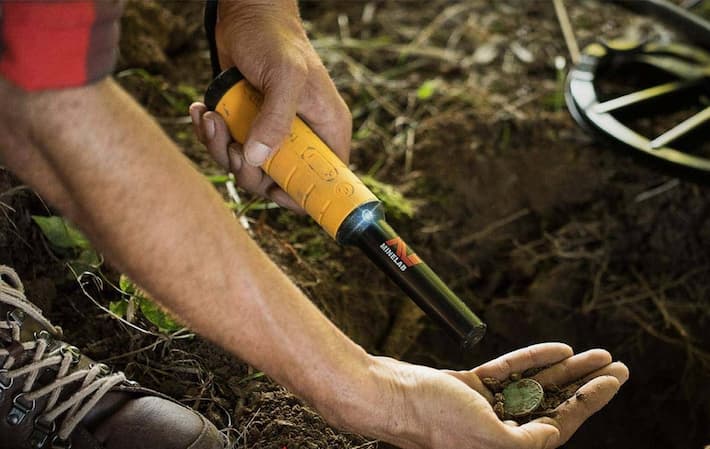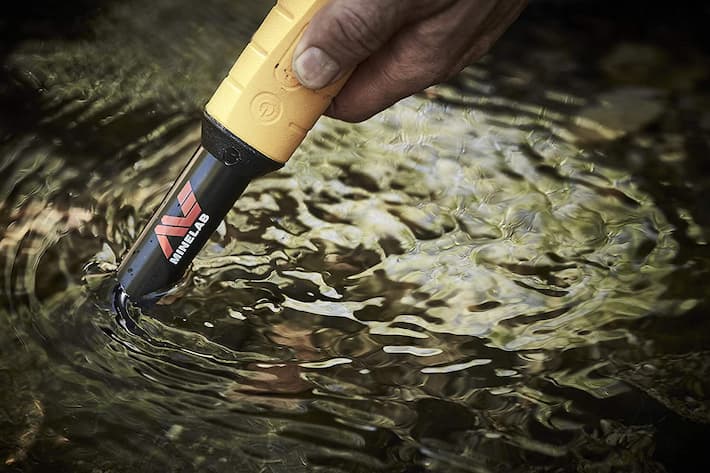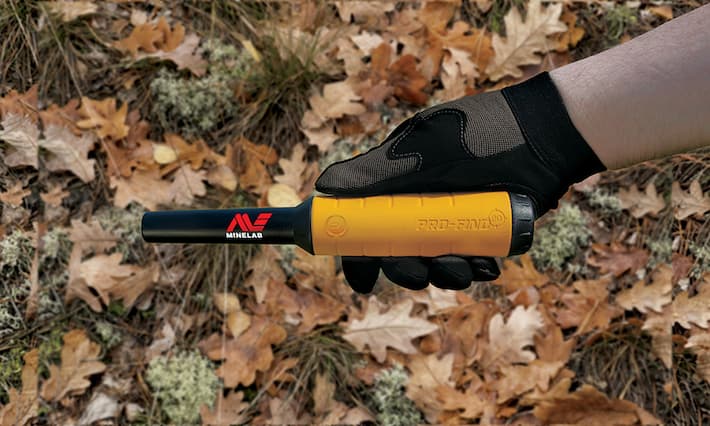Gold detecting isn’t for the faint-hearted. While some days you chance upon valuable nuggets, other days all you can find is garbage. While diamonds are created as a result of high temperature and pressure, gold only occurs naturally in certain locations along the Earth’s crust. This means that you’ll need a lot more than luck to find this rare treasure.
Thanks to many technological advancements, modern gold-detecting equipment helps you find it more quickly and effectively. Having a few of these gadgets up your sleeve will result in a more profitable and entertaining gold-hunting experience.
Today’s sophisticated metal detectors are great at accurately locating gold, jewellery, and coins. However, once a metal detector gives you a signal, you have to dig a lot to find your reward. One excellent gadget that’s helped me skip this annoying procedure is the pinpointer detector. Keep reading to find out what it does and how it can help you in finding more gold in less time!
What’s the Purpose of a Pinpointer?

I used to spend a lot of time looking for pennies in backyards and parks. But I had to stop when I realized the harm I was causing. After some time, I learned about the practical detector pinpointer as a tool that makes it possible to dig considerably smaller holes.
You can use this device to concentrate on the exact spot where you got a signal from your regular metal detector. To locate an object in the ground, this gadget compares the pitch or loudness of sounds to the intensity of the signal that it’s picking up from the object.
What are the Different Types of Pinpointers?
These modern gold-detecting devices are either built into the metal detector or used separately as handheld devices. While both of these types are widely used, I think the handheld style is much more practical due to its additional capabilities. I’ll describe both of these devices in detail below.
Handheld

A handheld pinpointer acts as a scaled-down metal detector. It uses the same technology as a standard metal detector but it’s much smaller and has different applications. Using this device along with your standard metal detector will guarantee your success when hunting for gold.
One of my current favourite gold-detecting devices is the handheld water-resistant detector pointer from Minelab. It’s perfect for both on-land and off-land gold-detecting. With its five sensitivity settings, you can easily locate gold at any depth. It’s designed to help you determine exactly where your treasure is and whether you’ve already dug it up. A typical metal detector, on the other hand, is mostly useful for scanning large areas.
In comparison to a normal metal detector, the Minelab pinpointer has a smaller detection range, making it easier to sift through a mass of excavated material. This device provides superior searching precision in a smaller detection range. It’s less complicated to operate while digging up an object than a full-size metal detector. However, you should always keep a conventional metal detector close by since it might help you find items that are buried deep in the ground.
Built-in
A portable handheld pointer is a handy tool for gold-hunting. However, you could also get a built-in version if you need a more compact gadget. In recent years, some manufacturers of metal detectors have begun to see how practical pinpointers are and they’re starting to include a pinpoint feature to their basic metal detectors.
A conventional built-in feature such as this operates similarly to a handheld pointer. The device makes a sound whose frequency or volume is proportionate to the signal it is receiving from the object, providing you with information about its proximity to the object.
If you get a metal detector with a built-in pinpointer, you won’t need to bring any extra equipment. However, this device won’t be as potent as its handheld equivalent. Its wide detecting area makes it challenging to locate an object. With such a metal detector, you will dig more slowly since you’ll often need to stand up and rediscover the object’s location.
What are the Advantages of Using a Pinpointer?

A detector pointer saves you the hassle of dragging around an all-purpose metal detector and helps you discover the specific location, depth, and even size of an item. Due to its small detection area and compact form, this device is useful for sifting through ground material. This little instrument is much easier to use than a large traditional metal detector. It also helps you avoid destroying your target when you’re unsure of its depth and location.
A handheld pinpointer will help you locate your item with precision and discover its exact depth. This way you’ll dig smaller holes and locate your treasure more easily. As a result, this device is ideal for both beginners and seasoned hunters.
How Do I Use a Pinpointer?
Well, it’s pretty straightforward:
- Find the location of the target with a standard metal detector;
- Start your excavation carefully and avoid damaging the object;
- Turn on your pinpointer detector after setting the ground balance;
- Move the gadget around when it starts making a more audible and repeating sound;
- Use the device’s tip to dig into the earth when you find your target’s location;
- If you can’t find your target, search the bottom and sidewalls of the hole.
If you’re a beginner on your gold-hunting journey, this is a necessary gadget. Compared to using a traditional metal detector alone, it will help you discover many more precious objects. Not to mention, it’s also lightweight, strong, and easy to operate!



